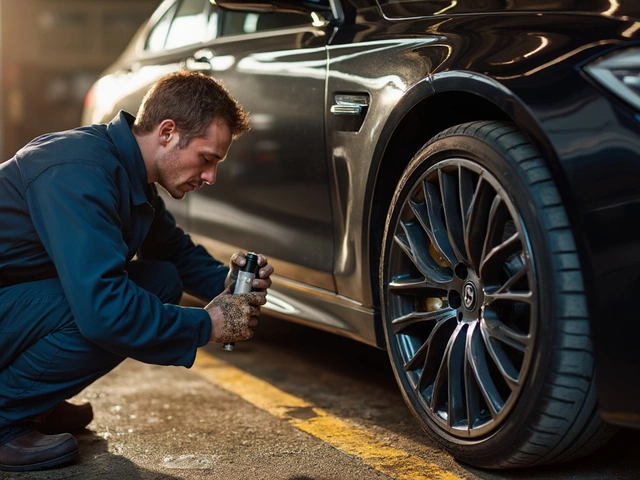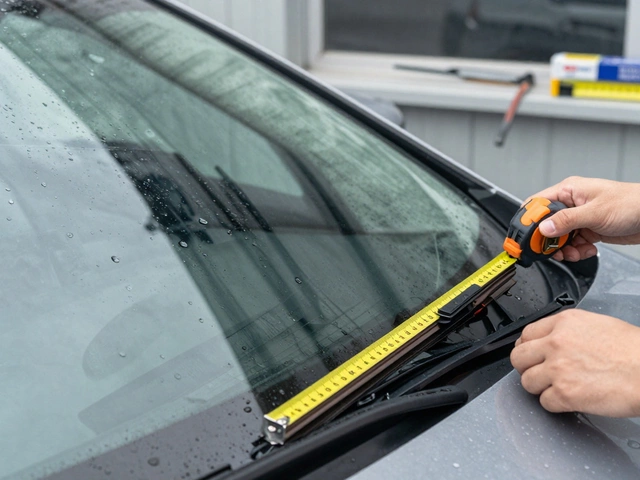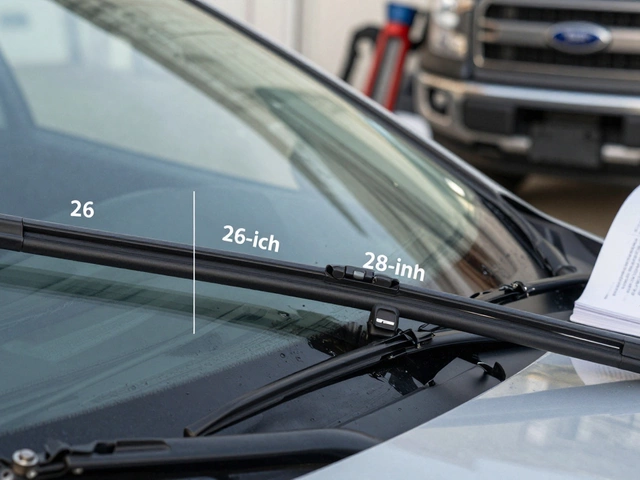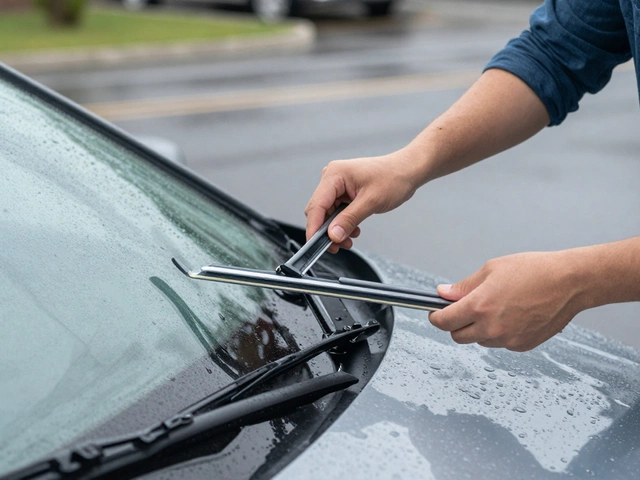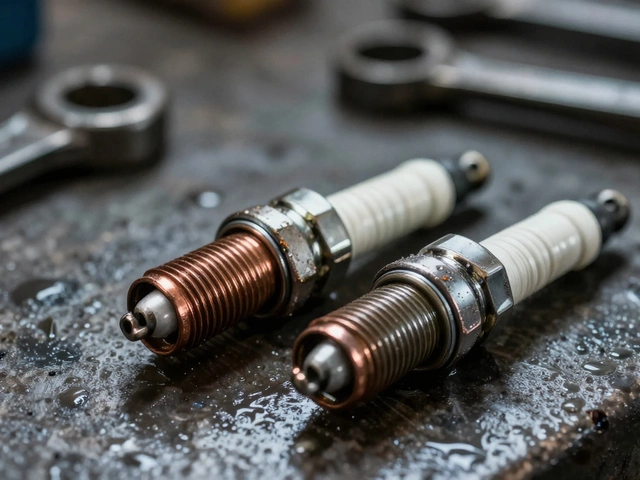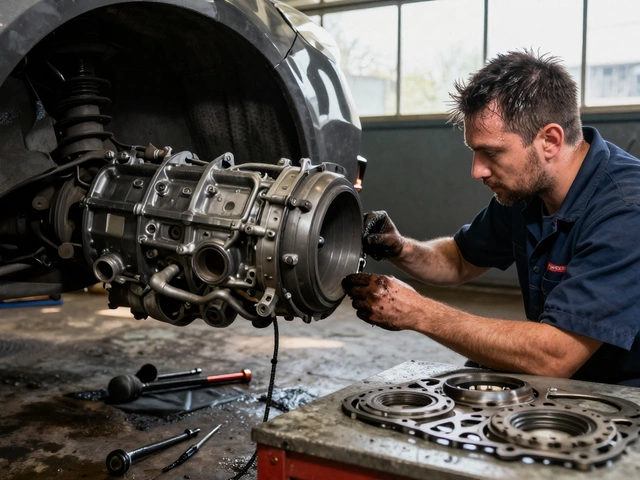Picture this: You're cruising down the highway, enjoying the tranquility of a well-tuned engine, but then the peace is shattered by a mysterious rattle or ominous clunking from somewhere beneath your vehicle. Such an experience can be unnerving, especially when you're unsure of the root cause.
Your vehicle's suspension system plays a critical role in ensuring a smooth and safe drive, acting as the intermediary between the wheels and the road. When suspension components deteriorate, various noises often arise, each hinting at different underlying issues.
In this article, we'll delve into the distinct sounds that bad suspension can produce, explore potential causes, and provide guidance on diagnosing these problems. You'll also find some practical tips on maintaining your suspension system, along with advice on when to consult a professional mechanic. Let's get started on turning those alarming noises back into the sound of silence!
- Common Noises and Their Causes
- How to Diagnose Suspension Issues
- Maintenance Tips to Prevent Suspension Problems
- When to Seek Professional Help
Common Noises and Their Causes
Driving down a peaceful road only to be disrupted by unexpected noises can quickly transform a smooth ride into a curious investigation. When it comes to your vehicle's suspension system, these noises aren't just bothersome; they might be crucial signals indicating parts of the system that require attention. One of the common sounds drivers notice is a distinct clunking noise, often heard when traversing bumps or potholes. This sound may suggest that suspension components like suspension problems stem from worn-out shock absorbers or struts. Such components are designed to dampen the force from road irregularities, and when their efficiency diminishes, the lack of absorption can create a clunking noise.
Then there's the annoying squeaking or creaking, often audible during turns or when handling uneven surfaces. Such sounds usually originate from points requiring lubrication, like ball joints or control arm bushings. Over time, these parts can dry out or accumulate dirt and grime, leading to a need for attention. Squeaking noises may amplify in drier weather, providing a hint that some grease could be just what's necessary. As if things couldn’t get more concerning, rattling noises might suggest loose components, be it shocks, struts, or even suspension noise coming from poorly fitting sway bars or mounts. Such connections must be secure to operate correctly, and hearing a rattle might mean it’s time to tighten things up or replace worn-out bushings.
A prominent thudding sound, especially when transitioning over uneven surfaces, can signal a problem with a vehicle's suspension problems like control arms or worn-out stabilizer links. It's worth noting that such sounds might be underestimated, but they serve as vital cues for maintaining vehicle integrity. Occasionally, more subtle symptoms accompany noises. For example, a continuous humming or buzzing could indicate issues with wheel bearings—not a direct suspension component, but interlinked with the system for a smooth ride. Wheel bearings facilitate proper wheel rotation, and their wear can signal problems accentuated by suspension troubles. As these elements intertwine, recognizing these subtle indicators becomes essential.
The aim of diagnosing such noises early is aptly captured by auto expert John Stirling, "A healthy suspension system doesn't just ensure comfort but is a critical factor in vehicle safety." With this in mind, it's crucial to observe and act at the first hint of unusual sound. Addressing underlying issues promptly ensures not just comfort in your ride but also provides an added layer of safety, preventing small problems from turning into costly repairs.
Recognizing these noises becomes a prudent step in safeguarding the longevity of your vehicle's suspension noise and maintaining its efficient functioning. While noises alone aren't always diagnostic, they set the stage for a closer inspection, needing a professional's eyes to diagnose and address the root of the sound. With consistent attention and early action, many noise-related issues can be prevented long before they impact your vehicle's performance and safety on the road. The harmony of a well-maintained car is not only in its movement but also in its ability to converse with you through sounds, offering signals even before things become critical.
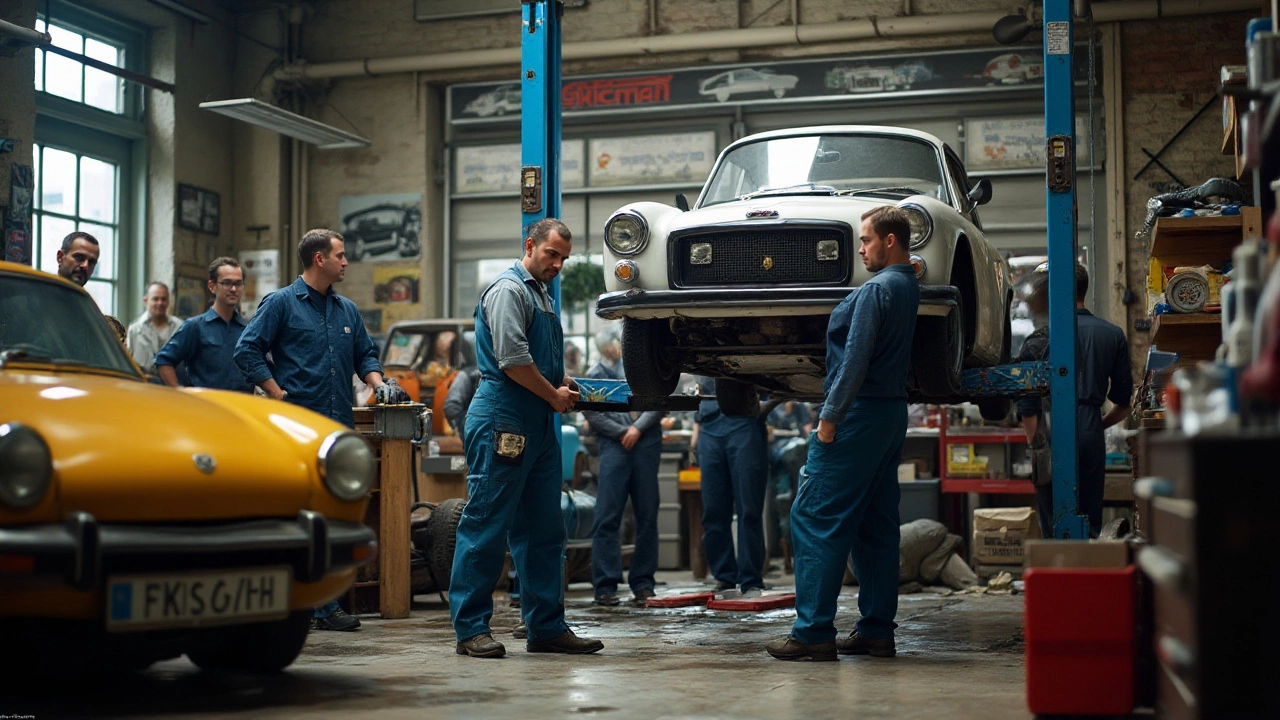
How to Diagnose Suspension Issues
Embarking on the journey to identify issues with your car's suspension doesn't necessarily require a mechanic’s certification. With a keen ear, patience, and a bit of methodical probing, you can pinpoint what's causing that troublesome sound. To start, it's crucial you don’t ignore unusual suspension noise as it can indicate larger, potentially dangerous issues. The first step is to isolate the cause, which usually involves a few simple tests you can perform at home or in a safe area like a parking lot.
To begin diagnosing, listen carefully while driving over bumps or traversing rough terrain. Does the car make a knocking sound? This typically points to a problem with the ball joints or stabilizer links. A popping noise while turning might suggest issues with the CV joint, though this can also be tire-related. If the noise is a squeaking or grinding sound, the problem could lie with the bushings or the control arms. Pay attention to these sounds and the conditions under which they occur, as this will guide you towards the source of the problem.
Once you've narrowed down the sound, consider doing a basic visual inspection. Ensure the car is on level ground and secure. Check for visible signs of wear and tear on the suspension components, such as cracks in rubber bushings, leaking struts, or springs that appear compressed or fractured. If you're up for more of a challenge, gently push down on each corner of the car and release, observing how quickly it stabilizes. Normally, it should bounce back once or twice and then settle; anything more may suggest worn shocks or struts.
For more detailed analysis, using household items like a flashlight and a screwdriver will aid you in a closer inspection. Assessing bolts and nuts for tightness can sometimes illuminate more serious suspension problems. Moreover, if you notice one side of the vehicle is sagging more than the other, it often indicates a spring failure. And remember, even though a test drive remains paramount to diagnosing these issues, never overlook the importance of getting feedback from passengers or other drivers. Just like hearing a different perspective in a debate, they might catch sounds you’ve missed.
“Neglecting suspension warning signs can lead to catastrophic failure on the road, leading not only to costly repairs but also compromising safety,” reminds Matt DeLorenzo, automotive expert and author. Keep this in mind as you delve into the diagnosis of your vehicle.At times, checking the suspension might require the help of special tools. Invest in a quality jack and stands, as well as any necessary wrenches or locking pliers. Just remember, safety is always the utmost priority. If at any point you're unsure, it's always better to consult a professional mechanic.
Here, a handy tip worth considering is documenting the symptoms and any actions you took, as it can save time and money when presenting the problem to a technician. Experts advise checking tire alignment, too, as poorly aligned wheels can exacerbate suspension problems, leading to uneven wear and even more suspension problems. Regular maintenance and vigilance form the cornerstone of keeping your ride smooth and quiet, reminiscent of when you drove your car off the lot the first time. Always remember: A little effort in diagnosis can prevent bigger headaches down the road.
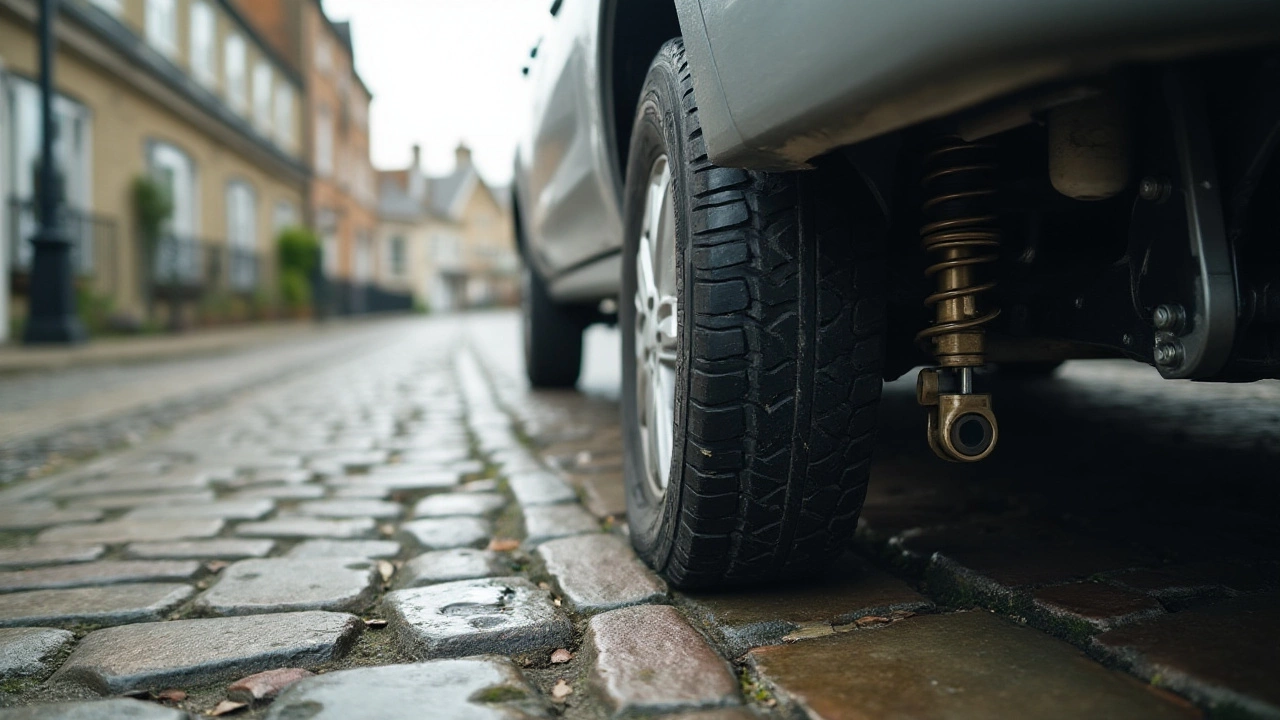
Maintenance Tips to Prevent Suspension Problems
The magical union of performance and safety on the road often rests on the robust shoulders of your vehicle's suspension. Regular maintenance isn't just a mechanical obligation, it's like a ritual that keeps your driving experience from turning bumpy or downright dangerous. By giving due attention to your car's suspension, you can evade those ominous creaks and unsettling noises, safeguarding not just your ride but also your peace of mind. Consider it an investment in not having to anxiously crank up your radio to drown out suspicious sounds.
First off, stay attuned to your vehicle. The moment you feel or hear something unusual, it shouldn't go ignored, no matter how trivial it seems. Regular checkups, ideally every 12,000 to 15,000 miles, can be a key measure in diagnosing potential suspension failures early. Pay attention to the suspension noise that accompanies your daily drive; tapping, rattling, or even a hushed whir can be a prelude to something serious. It's crucial to understand you aren't just fighting noise; you are waging war against wear.
"Routine inspections can save thousands in repairs," says John Smith, chief mechanic at Fast Lane Auto Specialist. "Addressing issues when they're minor leads to cost-effective solutions and less time in the shop."
Regular Inspection and Lubrication
An understanding of your vehicle's anatomy is not just for gearheads; inspecting suspension components such as bushings, shocks, and struts is something anyone can do with guidance. Look for cracks or leaks, and ensure regular lubrication where metal meets metal. A creaky suspension is often a dry one. Many car owners will find that simply applying a lithium-based grease to accessible joints and bushings can make a marked difference in the sound and performance of the suspension system.
Mind the Tires and Alignment
The importance of maintaining proper tire pressure and alignment can't be overstated when it comes to suspension longevity. Tires serve as the feet of your vehicle, and uneven wear can be both a symptom and a cause of suspension issues. An easy way to check tire alignment is through observing the wear patterns. If they aren’t wearing evenly, it’s a red flag. Rotation every 6,000 miles or during your biannual inspection can lead to significant improvements in handling and reduction in unwanted suspension problems.
- Check and top-up tire pressure monthly to ensure your car runs smoothly.
- Rotate tires to evenly distribute wear, extending their life and ensuring dependable performance.
Suspension parts aren't designed to last forever, and how quickly they age can depend on your driving habits and the roads you frequent. Avoiding excessive loads can minimize stress. Every bump and pothole you hit at high speed is hastening the wear on your suspension parts. So, as much as possible, steer clear of rough terrains or slow down when approaching them.
Replace Components in Time
Finally, a critical tip for preventing costly suspension issues is early replacement of weary components. Bushings, shocks, and struts have shelf lives and replacing them should be seen as pre-emptive actions rather than reactive fixes. When these parts begin to sag or become less effective, it's time to switch them out before they trigger more complex chain-reaction failures in the system.
Heeding these maintenance tips not only ensures your drives remain sweet symphonies of engine hum and tire whispers, it also confers a sense of security that no unexpected grind or clatter will threaten to interrupt the concert.

When to Seek Professional Help
The intricacies of modern vehicles can often leave even the most adept DIY enthusiasts perplexed. When it comes to the nuanced components of your vehicle’s suspension system, knowing when to seek professional assistance is crucial. While some problems might be DIY-friendly, others require the specialized tools and expertise that a seasoned mechanic offers. This section aims to guide you in differentiating between minor glitches you can handle and serious issues that necessitate expert intervention.
One clear sign that it's time to consult a professional is persistent, unusual noises despite attempts to rectify the problem. If your car continues to emit clunking, squealing, or knocking sounds during normal operation, these could indicate advanced wear and damage within the suspension system. The suspension noise might be due to worn-out shock absorbers or struts, rattling control arms, or even failing ball joints. Attempting to drive under these conditions not only worsens the problem but also poses significant safety risks.
Another red flag is any noticeable changes in handling. If your once-smooth ride now resembles a bumpy carnival attraction, even on familiar roads, it's likely a sign that your suspension parts need inspection by a skilled technician. Changes in vehicle ride height, excessive bouncing after bumps, or a noticeable tilt in the vehicle's stance when parked on a flat space are also causes for concern. The mechanics’ trained eye and specialized equipment can detect problems that aren't immediately visible or audible.
If you're hesitant about visiting a mechanic due to costs, bear in mind that an early diagnosis can save you money in the long run. For instance, the replacement of a single faulty component might prevent a domino effect leading to the failure of more expensive parts within the suspension system. As the National Institute for Automotive Service Excellence notes, '
Your vehicle's lifespan is often determined by how early you tackle the initial warning signs of mechanical fatigue.'In other words, investing in professional inspections could elongate your vehicle's operational life.
Lastly, if you plan to embark on long road trips, consult a mechanic for a pre-trip inspection, especially if you’ve experienced any recent suspension problems. Safety is paramount, and understanding the subtle language your car uses through noises, vibrations, or handling can save lives. When clear signs hint at a *suspension problem*, seeking expert help isn’t just wise—it’s a necessity. Experienced mechanics provide not only technical expertise but also peace of mind, ensuring your travels aren’t compromised by preventable issues.


